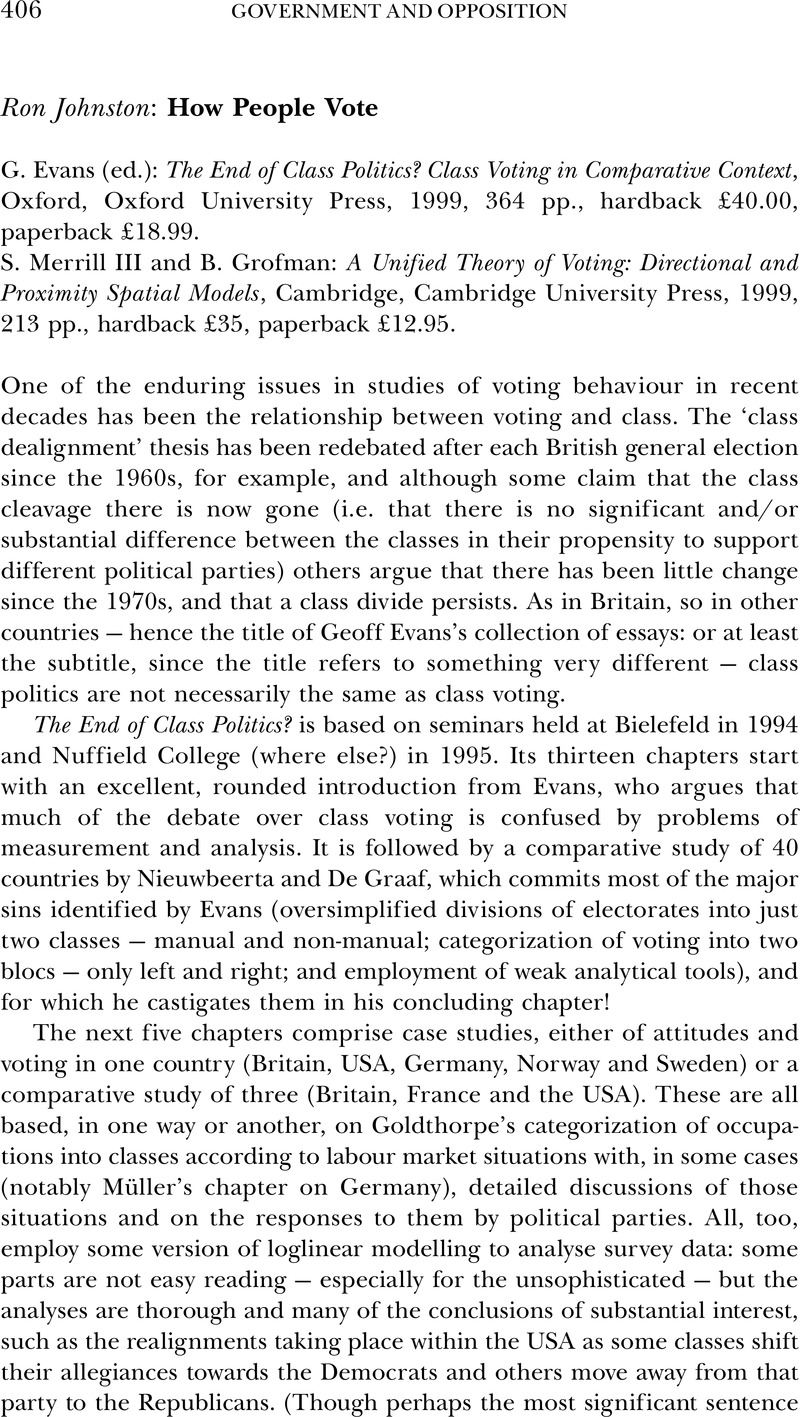No CrossRef data available.

1 Archer, J. C. and Taylor, P. J., Section and Party, Chi Chester, John Wiley, 1981.Google Scholar
2 Taylor, P. J., ‘History’s Dialogue: An Exemplification from Political Geography’, Progress in Human Geography, 12 (1998), pp. 1–14.CrossRefGoogle Scholar
3 Lipset, S. M. and Rokkan, S. E. (eds), Party Systems and Voter Alignments, New York, The Free Press, 1967;Google Scholar Dogan, M. and Rokkan, S. E. (eds), Quantitative Ecological Analysis in the Social Sciences, Cambridge, Mass., The MIT Press, 1969;Google Scholar and Allardt, E. A. and Rokkan, S. E. (eds), Mass Politics, New York, The Free Press, 1970.Google Scholar
4 Johnston, R.J., Pattie, C. J. and Russell, A. T., ‘Dealignment, Spatial Polarisation and Economic Voting: An Exploration of Recent Trends in British Voting Behaviour’, European Journal of Political Research, 23 (1993), pp. 67–90.CrossRefGoogle Scholar
5 Johnston, R.J., Dorling, D. F. L., Tunstall, H., Rossiter, D.J., Pattie, C.J. and MacAllister, I., ‘Locating the Altruistic Voter: Context, Egocentric Voting and Support for the Conservative Party at the 1997 General Election in England and Wales’, Environment and Planning A, 32 (2000), pp. 673–94.CrossRefGoogle Scholar
6 e.g. Pattie, C.J. , Dorling, D. F. L. and Pattie, R.J. Johnston, , ‘A Debt-owning Democracy: The Political Impact of Housing Market Recession at the British General Election of 1992’, Urban Studies, 32 (1995), pp. 1293–315CrossRefGoogle Scholar, and C. J., Fieldhouse, E. A., and Johnston, R.J., ‘Individual Vote Choices and Constituency Economic Conditions at the 1992 British General Election’, Electoral Studies, 14 (1995), pp. 399–416.Google Scholar
7 Downs, A., An Economic Theory of Democracy, New York, Harper, 1957.Google Scholar